 |
| |
   |
 |
Art Growers Create “Village Life is Fun!” Theme —Harmony between Village, Youth, Art |
| |
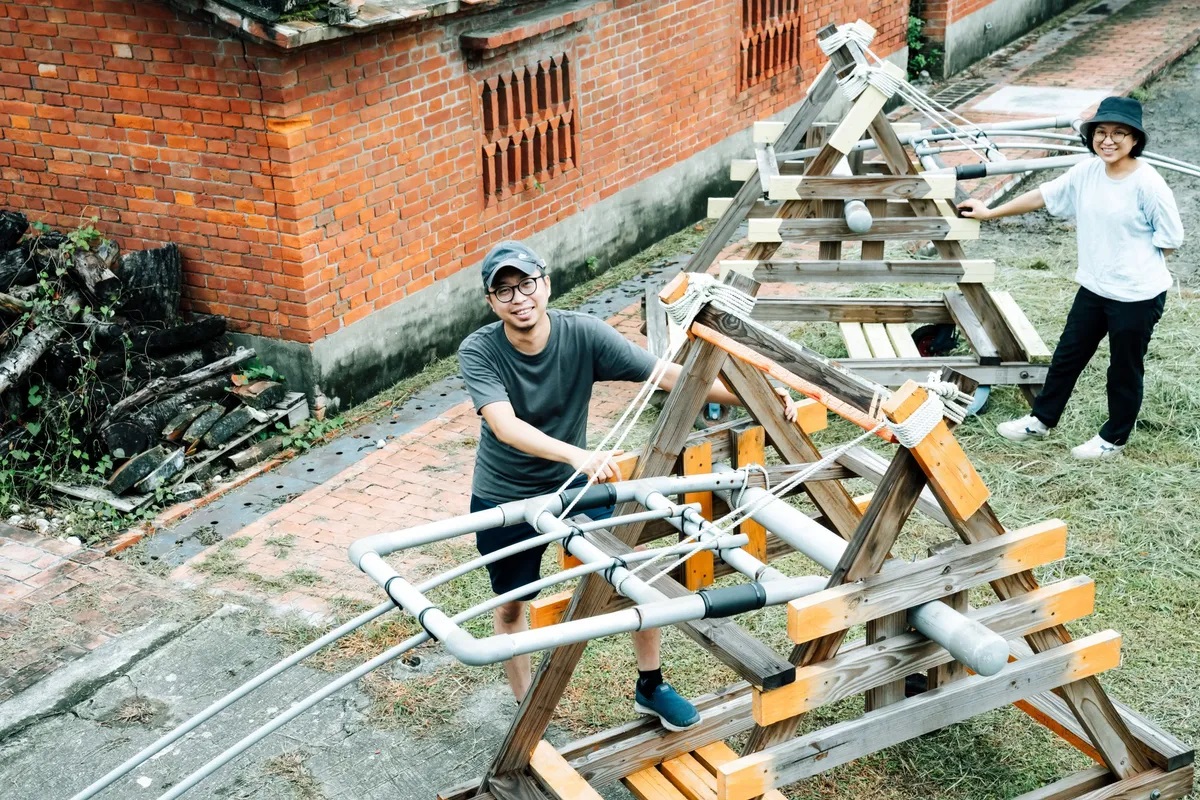
Art Growers: Jian-Ruei Lin (left) and Wan-Tsz Lo (right) (Image Source: Cultural Affairs Bureau, Tainan City Government)
Since studying in the Graduate Institute of Architecture in Tainan National University of the Arts (TNNUA), Jian-Ruei Lin has been living in Daqi Village for 12 years now. He and his wife, Wan-Tsz Lo, who also graduated from the same college as he did, position themselves as “Art Growers.” Despite winning the Youth Action Award of the first Community Empowerment Awards organized by the Ministry of Culture, Lin opines that the award was not for him alone. It is a recognition for the concerted effort with Lo and other work partners.
They established the Daqi Creative Art Village Base which is underpinned by the theme, “Village Life is Fun!” They reinvigorate idle spaces in the community using their architecture expertise, collaborate with local fruit farmers to create “art mango” boxes, keep schoolchildren company, and design summer and winter camps for elementary students. Their games integrate local characteristics and innovation, and therefore are wildly popular. The couple and their partners remodeled an idle rice mill and started a business, i.e., the House of Art Grower. Located at the Taiwan Country Highway 171, the House of Art Grower is much like the living room of Daqi Village. It serves seasonal fruit, desserts, cold drinks, local agri-products and interesting accessories to receive visitors who are more than willing to explore various possibilities for frolicking.
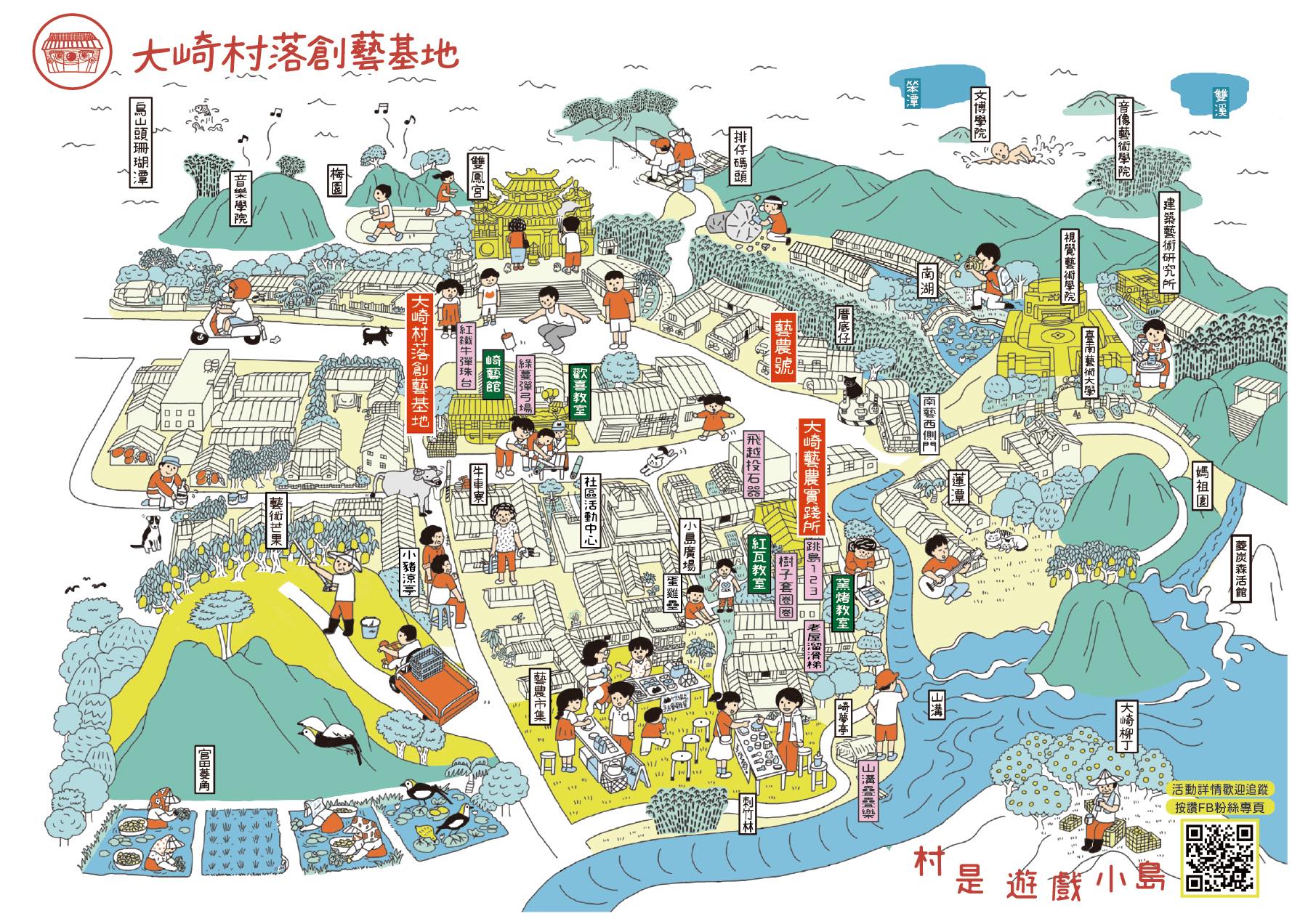
Conception of “Village Life is Fun!” (Image Source: Jian-Ruei Lin)
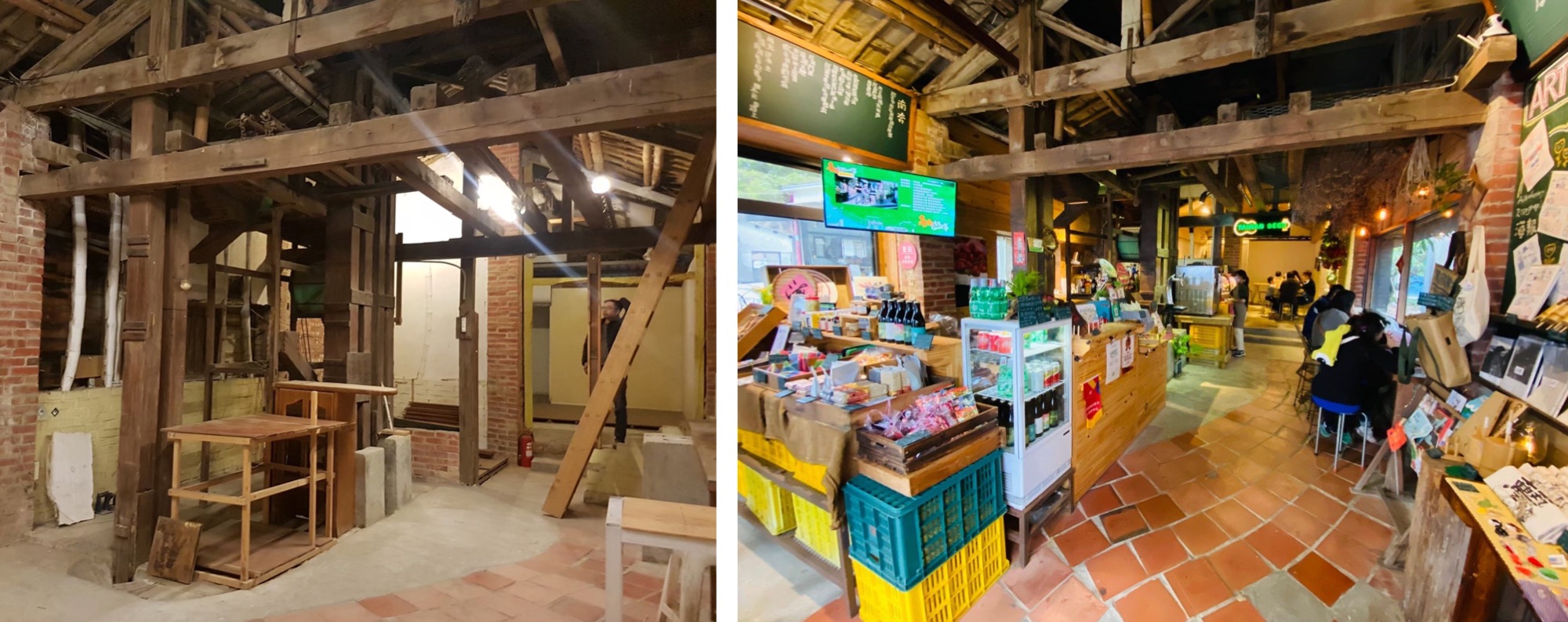
House of Art Grower: Before (left) and after (right) (Image Source: Jian-Ruei Lin)
From relocated students to resident Art Growers
The Daqi Village is adjacent to TNNUA, and Wushantou Reservoir, which is known as the “coral lake.” The village is blessed with a landscape of mountains and waters. It has an unexpected provenance. It was formed when the reservoir was first built over a century ago. Villagers moved from an area where the reservoir now is. The century-old “mud house,” which was moved from the reservoir, can still be found. It is the oldest house in the village, carrying age-old memories. However, due to the plight of the remote area and out-migration, the house was left in ruins.
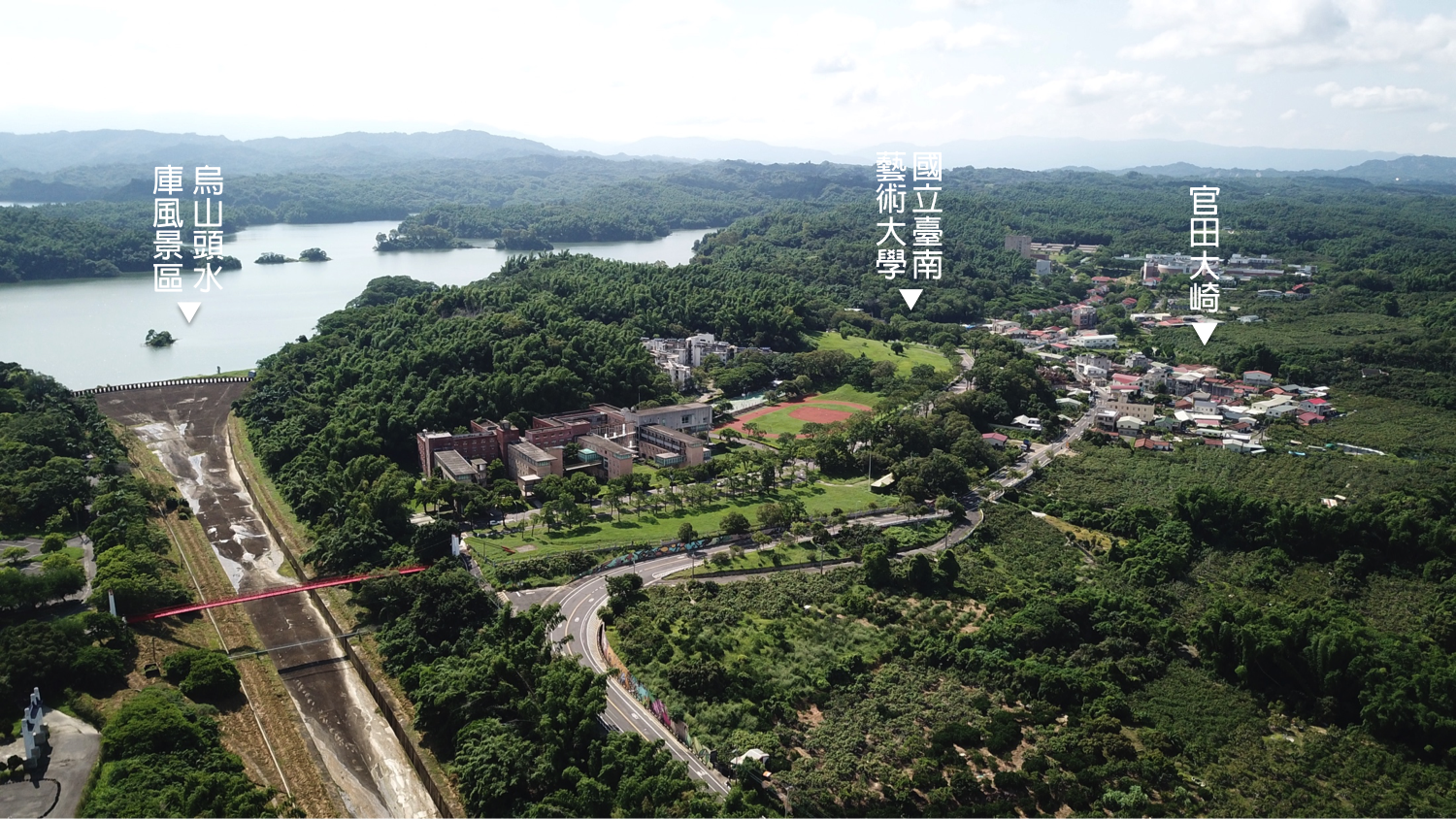
Geographical location of the village (Image Source: Jian-Ruei Lin)
Jian-Ruei Lin has participated in in-residence remodeling of the ruins since he was a student at the Graduate Institute of Architecture. They started with revamping a resting hut, the Qimeng Pavilion. They sought the funding and knowledge required for the project. Later on, he and his seniors in the college remodeled an old school and turned it into a children’s library, the Qiyi House. Despite the remodeling took place more than a decade ago, the village still lacks the manpower to operate the library properly. Some aspiring youths stay back for the cause. They use concrete actions to reinvigorate the space. Jian-Ruei is one of them. He has since developed an “Art Growing” lifestyle that thrives on creativity.
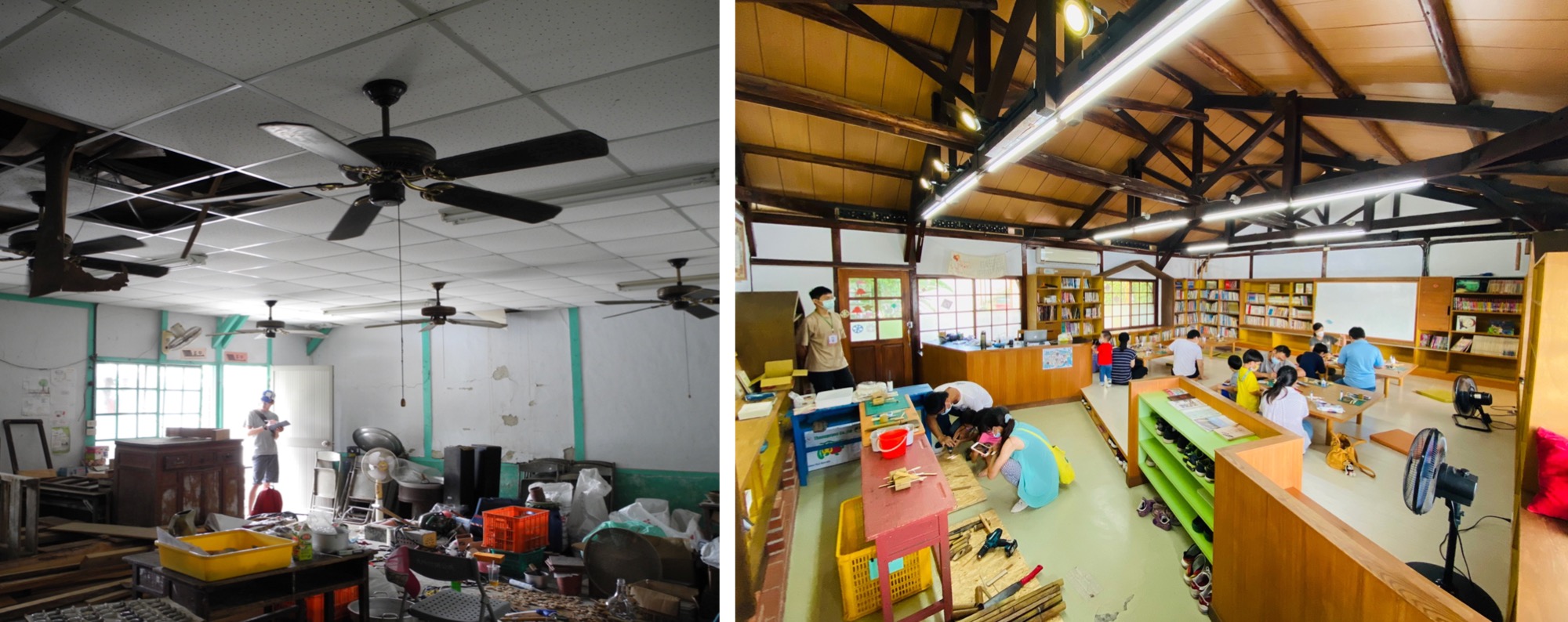
Qiyi House: Before (left) and after (right) remodeling (Image Source: Jian-Ruei Lin)
Reinvigorating idle spaces with creativity—“No-electricity” games at every corner of Daqi Village
For years, in the hope of turning Daqi Village into “islands of games,” Jian-Ruei and Wan-Tsz have developed many fun art works. Based on the environment of the village, they created the Daqi Creative Art Village Base which contains games for families, such as quoits, old-style pinball, and slingshots. “We connected the idle spaces in the village and use the most operable way to up the fun.” By developing a scavenger hunt, games for different stages are scattered throughout the village, creating a touring experience while forming a sustainable foundation with the villagers.
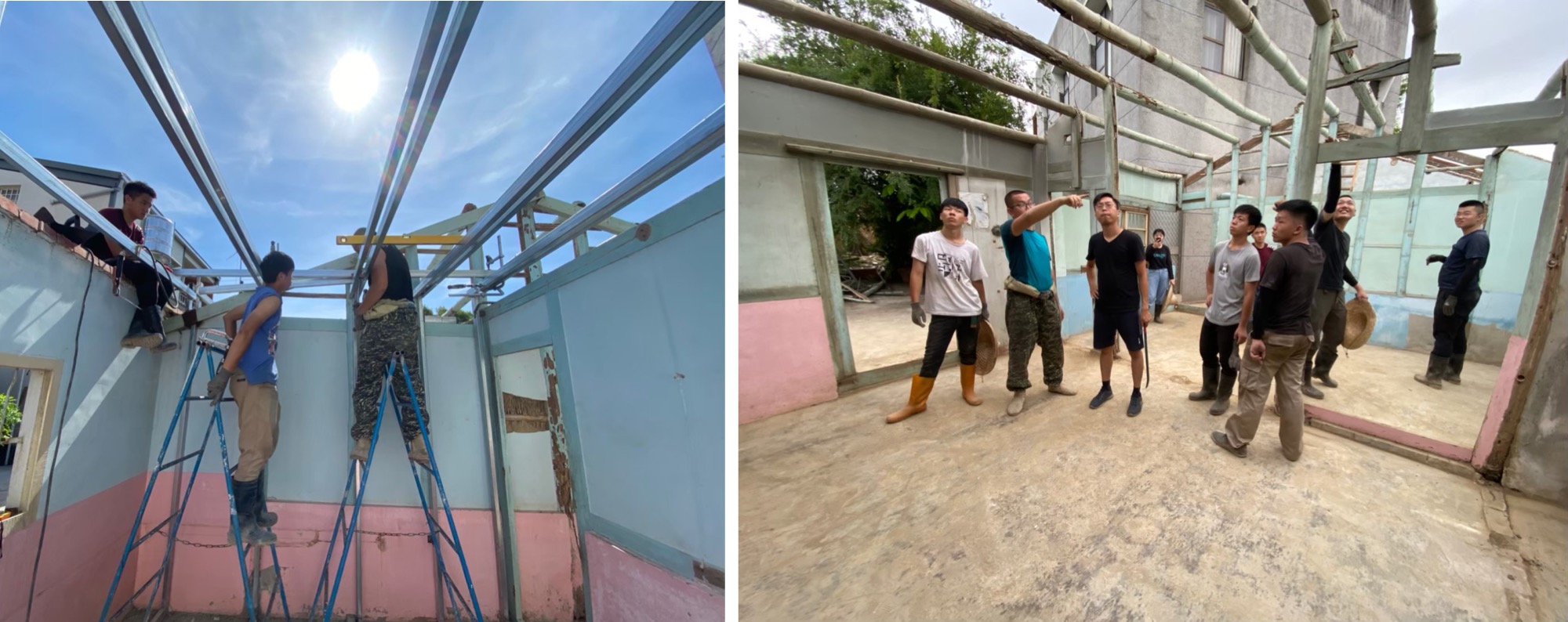
In-residence youths remodeling an old house (Image Source: Jian-Ruei Lin)
During the fall and winter time in 2022, following a subsidy from the Agency of Rural Development and Soil and Water Conservation, they started an improvement project on the outskirts of the village, which included road repair and revamping gaming spaces. Currently, the revamp of 13 spots is under the management of Jian-Ruei’s team, e.g., remodeling an old house to build a space for immersive experience, outdoor landscaping, and game corners. Jian-Ruei explained that each themed space is like a special island. “It makes the environment of the community more coherent and we hope to turn the village into ‘islands’ bearing fun and interesting games.”
Strolling at the village, the experience of traversing the high and low spaces is indeed vastly different from the vertical movement in city buildings. The wide layout is the product of spatial planning of the Art Grower Team for over a decade. They take into consideration how the local elderly people would use these spaces, as well as the experience they try to give visitors. They use ramps to improve the convenience of walking in the village. Making use of the environmental characteristics, the division of public and residential spaces can become unclear at times. In the cohesive Daqi Village, seven outdoor game corners have been built, forming a safe route of games. The locals can access them free of charge. In addition, the House of Art Grower has rolled out tickets for immersive village experience for visitors.
Youth actualizing creativity, cherishing trusting relationships
The scale of the islands of games is attributable not only to Jian-Ruei and Wan-Tsz’s architecture expertise, but also the trust that the locals have in them. This is what the team cherishes the most. The Art Grower team uses design based on practicality to reinvigorate the spaces, and enhance the lives of the locals. To the locals, this is the most impressive part. The positive cycle prompts the elderly people to rent out their old houses to the team, supporting the team to make full use of their creativity. The relationship foundation, that is based on trust and meaningful sentiments, is the product of long-term cultivation.
Apart from the locals, the trust in the islands of games by students from TNNUA has become a force of empowerment for the community. Learning outside the classroom often takes place in the village. Other collaborating partners that graduated from the Graduate Institute of Architecture have also contributed to the development. The empowerment and collaboration are vital forces for the cooperation, as well as for retaining flexibility.
Steadily building comprehensive experience services, pragmatically managing livelihood
Jian-Ruei mentioned that it is hard to come by students who would stay back in the village after graduating university. The aging population in the community is severe. Jian-Ruei said they do not take on the task or aspire to make young people come back to villages, “but creating connections with more people is probably what we can do, and it will help our survival.” They would do anything to create an opportunity or contact for people to get to know and come to Daqi Village. To be more specific, serving the community has been assimilated into all their actions. Nonetheless, their current concern is survival: how to operate steadily and keep growing? How can they let more people get to know their brand and services? How can the team function in a sustainable manner?
From the House of Art Grower to seven game corners, as well as the “Red Tile Classroom” for immersive experience courses, and the “Qiyi House” that makes spinning tops in which children in the early days would play, each space in the community has its own use. Connecting these spaces would make them more coherent. Jian-Ruei described, “I wouldn’t say it’s done, but now when people come here, they can sense the point-line-plane connection between these spaces. We will continue to come up with more content for receiving visitors in the community.”
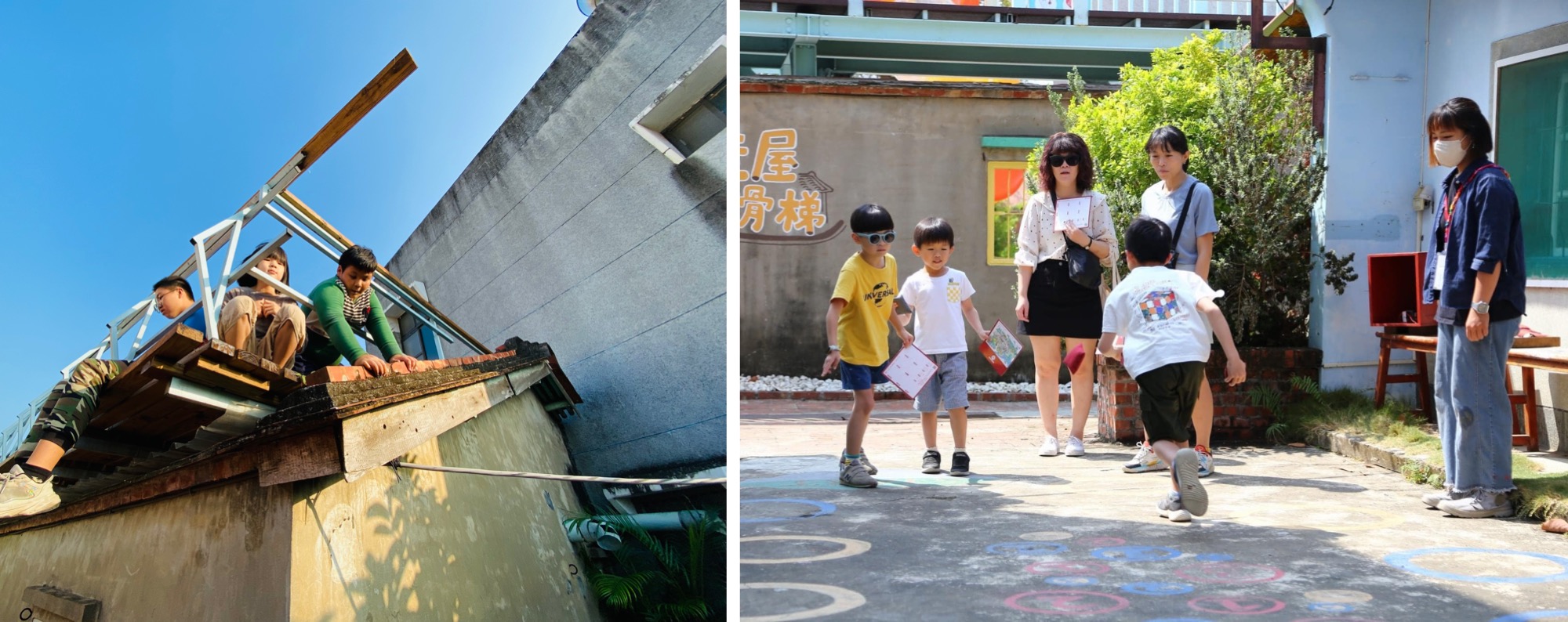
Every corner of the village is a place for playing games. (Image Source: Jian-Ruei Lin)
Aspiring for more external connections in “education” and “tourism”
“I studied architecture, and Wan-Tsz specializes in artistic design. We have been using our expertise to create our service content. For the last few years, we have built a model for immersive experience. What we are doing is actually related to ‘education’ and ‘tourism.’ So far, we have been promoting our brands, to hopefully, sell our products to other places. We are confident that people who have visited us will fall in love with us and come back for more!” To operate in post-pandemic times, the cooperation with travel agencies to bring in visitors during weekdays has been restored. Visitors to Wushantou Reservoir can redeem ice-cream at the House of Art Grower with a voucher and get to know the Daqi Village. They are also in discussion with entities in the northern regions for winter and summer camps. Jian-Ruei expects more itineraries from travel agencies to incorporate Daqi Village, including their immersive experience courses, village touring, etc. Organizing fun-filled itineraries to the North Riverside may become a routine in the future. It would not only sustain their livelihood, but also create a better quality of life for them. In 2023, they expect to build a woodball court at the silver grassland next to the valley. By then, the village will have a new game that does not require electricity either.
The drawing of the “Art Grower Community by the Coral Lake” in their promotional brochure is never a depiction of a promise land. It is a mountain village that has been imbued with the warmth of people. The actions undertaken by the youth in the village have accentuated and put together this facet of the village. When talking about the future, Jian-Ruei said, “Hopefully, this year we get to connect the landscape all the way from TNNUA to Daqi Village. When people are on the move, they would ‘unknowingly’ arrive at the campus, or ‘unknowingly’ arrive at Daqi Village from the campus.” It would be an exciting milestone for co-prosperity in the coming months——the immersive experience of strolling the islands of games “unknowingly” will enable visitors to feel the intertwining of life force and art in Daqi Village.
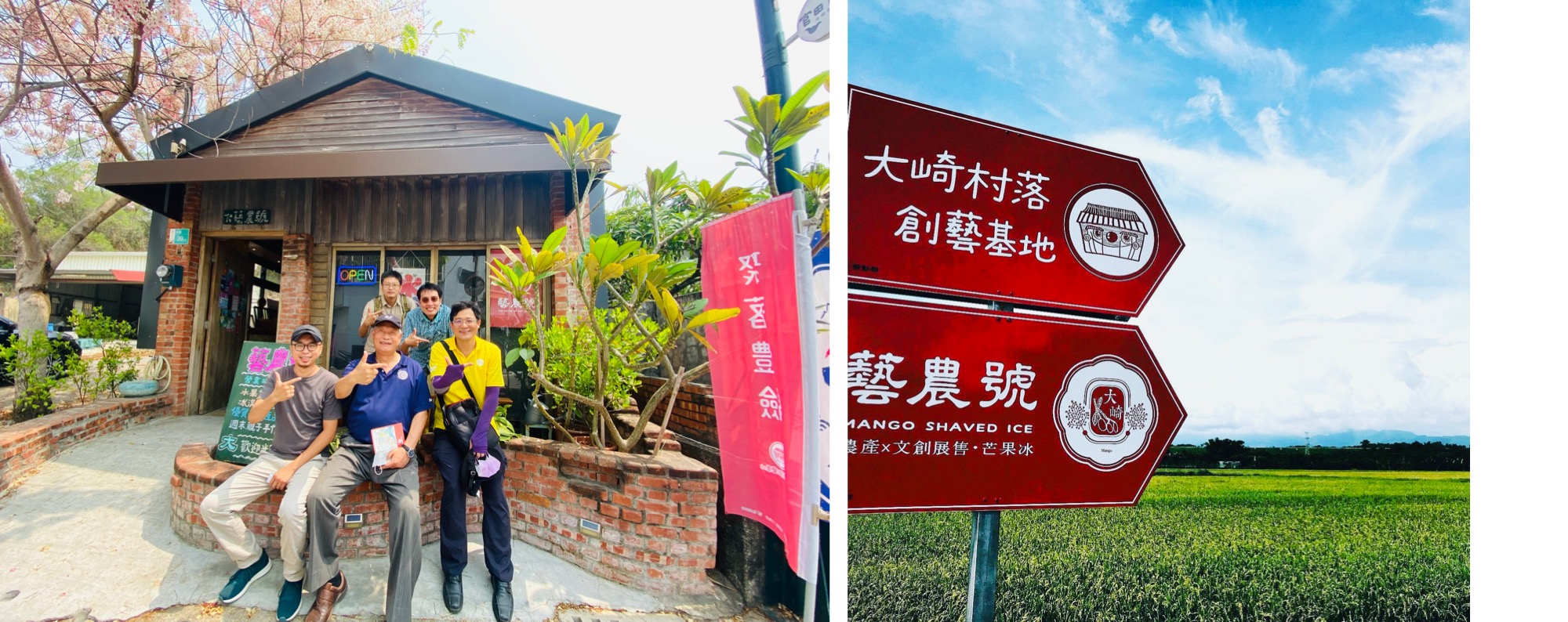
Left: Entrance of the House of Art Grower; right: signage for Batian Road (Image Source: Jian-Ruei Lin)
Biography of Jian-Ruei Lin:
Jian-Ruei and Wan-Tsz were two leave-home youngsters and kismet brought them to Daqi Village by the Wushantou Reservoir in Tainan. Pride themselves to be Art Growers, they conceived the theme, “Village Life is Fun!” and used design to reinvigorate the village. They are currently running the the Daqi Creative Art Village Base and the House of Art Grower, and work to grow their placemaking services elsewhere.
(Interview Editor: Ling-Ying Huang)
Reviewed by: Jian-Ruei Lin
Authorization in this article:CC3.0 BY-NC-SA
|
|
|
 |











